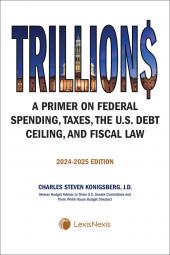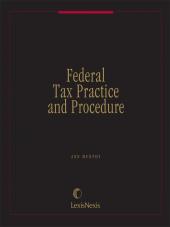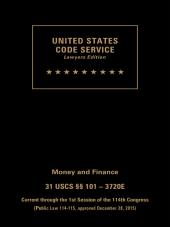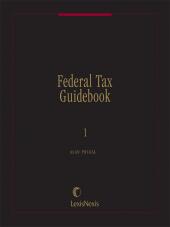Trillions: A Primer on Federal Spending, Taxes, the U.S. Debt Ceiling, and Fiscal Law
Trillions: A Primer on Federal Spending, Taxes, the U.S. Debt Ceiling, and Fiscal Law, is a concise, plain English explanation of federal spending, taxes, and debt including the interactions of the federal budget, authorization, appropriations, and tax processes. This book also includes two unique features—a quick overview of federal spending and taxes (“$7 trillion in 14 minutes”) for media and others who need to understand the scope of federal activities; and a detailed explanation of recurrent fiscal crises over raising the statutory debt limit, which will again face the White House and Congress in 2025.
This book is relevant for national news and business media, Members of Congress and staff, federal agencies, attorneys, advocates, professors and students, the business community and trade associations, nonprofits, and the curious public.
Select a format
 International Order Inquiry
International Order Inquiry
Select subscription type
Terms & conditions
Subscribers receive the product(s) listed on the Order Form and any Updates made available during the annual subscription period. Shipping and handling fees are not included in the annual price.
Subscribers are advised of the number of Updates that were made to the particular publication the prior year. The number of Updates may vary due to developments in the law and other publishing issues, but subscribers may use this as a rough estimate of future shipments. Subscribers may call Customer Support at 800-833-9844 for additional information.
Subscribers may cancel this subscription by: calling Customer Support at 800-833-9844; emailing customer.support@lexisnexis.com; or returning the invoice marked "CANCEL".
If subscribers cancel within 30 days after the product is ordered or received and return the product at their expense, then they will receive a full credit of the price for the annual subscription.
If subscribers cancel between 31 and 60 days after the invoice date and return the product at their expense, then they will receive a 5/6th credit of the price for the annual subscription. No credit will be given for cancellations more than 60 days after the invoice date. To receive any credit, subscriber must return all product(s) shipped during the year at their expense within the applicable cancellation period listed above.
The total price includes the product(s) listed in the Order Form and any Updates for a limited period (minimum period of 30 days) after the order is placed ("Order Window"). Shipping and handling fees are not included in the grand total price.
All shipments may be returned, at subscribers' expense, for full credit of the Price within 30 days of receipt.
Shipments may not be returned, and no credits will be issued, more than 30 days after receipt.
After the Order Window, subscribers will receive notice of Updates along with the then-current grand total price and order process as Updates become available. Subscribers will only be shipped those Updates they specifically request.
Product description
View a sample of this title using the ReadNow feature
Trillions: A Primer on Federal Spending, Taxes, the U.S. Debt Ceiling, and Fiscal Law, is a concise, plain English explanation of federal spending, taxes, and debt including the interactions of the federal budget, authorization, appropriations, and tax processes. This book also includes two unique features—a quick overview of federal spending and taxes (“$7 trillion in 14 minutes”) for media and others who need to understand the scope of federal activities; and a detailed explanation of recurrent fiscal crises over raising the statutory debt limit, which will again face the White House and Congress in 2025.
This primer provides an up-to-date, plain English explanation of the process that governs the federal budget including: annual appropriations, entitlement and other permanent laws enacted outside the appropriations process, the growing portion of the budget required to service the debt, and the trillions in revenues raised each year through individual, payroll, corporate, and other taxes and fees.
This book is relevant for Members of Congress and staff, federal agencies, attorneys, advocates, professors and students, the national news and business media, the business community and trade associations, nonprofits, and the curious public. Its wide-ranging contents cover, among other topics:
• A capsule summary of U.S. spending, taxes, and major programs.
• A clear and concise explanation of the debt ceiling and why blocking an increase in the debt limit does not reduce U.S. debt but risks global economic chaos.
• Congress’ constitutional authority over appropriations and the recent Supreme Court decision on the Consumer Financial Protection Bureau’s funding mechanism.
• The 3-tier legislative process: (i) authorization, (ii) appropriations & revenues, and (iii) the congressional budget process.
• The crucial distinction in federal budgeting between “discretionary spending” provided through annual appropriations, and “direct (mandatory) spending” controlled outside the appropriation process through permanent law.
• The 1974 Budget Act’s establishment of the budget resolution—an internal congressional framework for discretionary spending, direct spending, and revenues enforced through parliamentary points of order, and statutory agreements that have recently replaced the budget resolution.
•
• The “budget reconciliation” process, which enables filibuster-proof multi-committee legislative packages to change entitlement and tax laws through a fast-track process.
• The Senate’s “Byrd Rule” and how it reined in the scope of budget reconciliation and limits the duration of tax cuts.
• “Budget sequestration,” which enables automatic spending cuts implemented by the Office of Management and Budget (OMB), first to enforce deficit caps, later to enforce discretionary spending caps and the pay-as-you-go (PAYGO) deficit-neutrality requirement, and currently to implement more nearly $30 billion per year in automatic direct spending cuts through 2031.
• The operation of discretionary spending caps, established in 1990 and continued through 2002, revived in 2011, expired in 2021, and revived again in 2023.
• The Pay-As-You-Go (PAYGO) requirement for deficit neutrality in new direct spending and tax cuts: established in 1990 and expired in 2002, permanently reenacted in 2010 but evaded every year since then through various escape valves.
• Budget controls that remain after expiration of the Budget Control Act in 2021 and enactment of the Fiscal Responsibility Act of 2023.
• Strict earmark disclosure requirements that remain in effect during the revival of congressional earmarks.
• The unique highway funding process—a hybrid of direct spending and appropriations control.
• Federal credit reforms which control direct loans and loan guarantees by requiring up-front appropriations for subsidy costs.
• The federal unified budget, which combines operating and capital expenditures, but excludes Social Security and the U.S. Postal Service.
• Budget treatment of government-sponsored enterprises (GSEs) to advance the housing, agriculture, and rural development sectors.
• The Impoundment Control Act (ICA) which governs presidential deferrals and proposed rescissions and the recent violation of the ICA by the Trump Administration’s withholding of Ukraine security assistance in the summer of 2019.
• A thorough glossary explaining in plain English commonly used budget terms.
The previous edition's ISBN is 9781663361387.
eBooks, CDs, downloadable content, and software purchases are noncancelable, nonrefundable and nonreturnable. Click here for more information about LexisNexis eBooks. The eBook versions of this title may feature links to Lexis+® for further legal research options. A valid subscription to Lexis+® is required to access this content.
Table of contents
Introduction
Chapter 1 $7 TRILLION IN 14 MINUTES: An Overview of the $6.9 Trillion Federal Budget
Chapter 2 Foundational Concepts
Chapter 3 President's Budget Request to Congress
Chapter 4 Budget Act Launches Congressional Budget Process
Chapter 5 lmpoundment Control Act of 1974
Chapter 6 Appropriations and the Budget Process
Chapter 7 Revenues and the Budget Process
Chapter 8 1985 Deficit Control Act Establishes Deficit Caps and Sequestration
Chapter 9 1990 Budget Enforcement Act Launches Spending Caps and PAYGO
Chapter 10 The 2010 Statutory Pay-As-You-Go Act and its Evasion
Chapter 11 2011Budget Control Act: Spending Caps and Direct (Mandatory) Spending Sequester
Chapter 12 Bipartisan Budget Acts (2013-19) & Fiscal Responsibility Act of 2023
Chapter 13 Public Debt and the Debt Limit
Chapter 14 Unified Budget, Trust Funds, Off-Budget Entities, GSEs
Chapter 15 Supreme Court Finds Broad Flexibility in Appropriations Clause, Upholding CFPB Funding Mechanism
Chapter 16 Additional Laws and Rules Governing the Budget Process
Chapter 17 Summary of Current Budget Controls
Chapter 18 Budget Process Reforms to Consider
 Lexis Nexis
Lexis Nexis 


